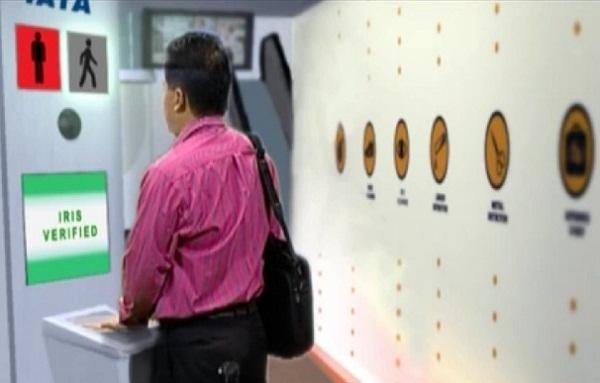Futuristic Airport Security to End Invasive Searches and Long Lines

Post 9/11 airport security has caused comic levels of hassle for almost a decade, and shows no sign of letting up. But by using biometric sensors, special noninvasive scanners and a dose of common sense, the International Air Transport Association's (IATA) "Checkpoint of the Future" make flying the tolerable, dignified activity we all remember.
"Today's checkpoint was designed four decades ago to stop hijackers carrying metal weapons. Since then, we have grafted on more complex procedures to meet emerging threats. We are more secure, but it is time to rethink everything. We need a process that responds to today's threat. It must amalgamate intelligence based on passenger information and new technology. That means moving from a system that looks for bad objects, to one that can find bad people," said Giovanni Bisignani, IATA's Director General and CEO.
Three security lanes will have technology to check passengers according to risk. Each traveler will undergo an iris scan to determine their identity. A computer will then crosscheck each persons′ travel history, and determine their relative risk based on a complex intelligence algorithm.
"Known travelers" who have registered and completed background checks with government authorities will have expedited access. "Normal screening" would be for the majority of travelers. And those passengers for whom less information is available, who are randomly selected or who are deemed to be an "Elevated risk" would have an additional level of screening.
In this scheme, your elderly grandmother would only need to pass through the standard metal detector, while a young man returning from a trip to Pakistan would go through a more extensive explosives check. Screening technology is being developed that will allow passengers to walk through the checkpoint without having to remove clothes or unpack their belongings. Moreover, it is envisioned that the security process could be combined with outbound customs and immigration procedures, further streamlining the passenger experience.
"We have the ability to move to the biometric scanning and three-lane concept right now. And while some of the technology still needs to be developed, even by just re-purposing what we have today, we could see major changes in two or three years time," said Bisignani.
This story was provided by InnovationNewsDaily, sister site to LiveScience. Follow InnovationNewsDaily on Twitter @News_Innovation, or on Facebook.
Sign up for the Live Science daily newsletter now
Get the world’s most fascinating discoveries delivered straight to your inbox.











